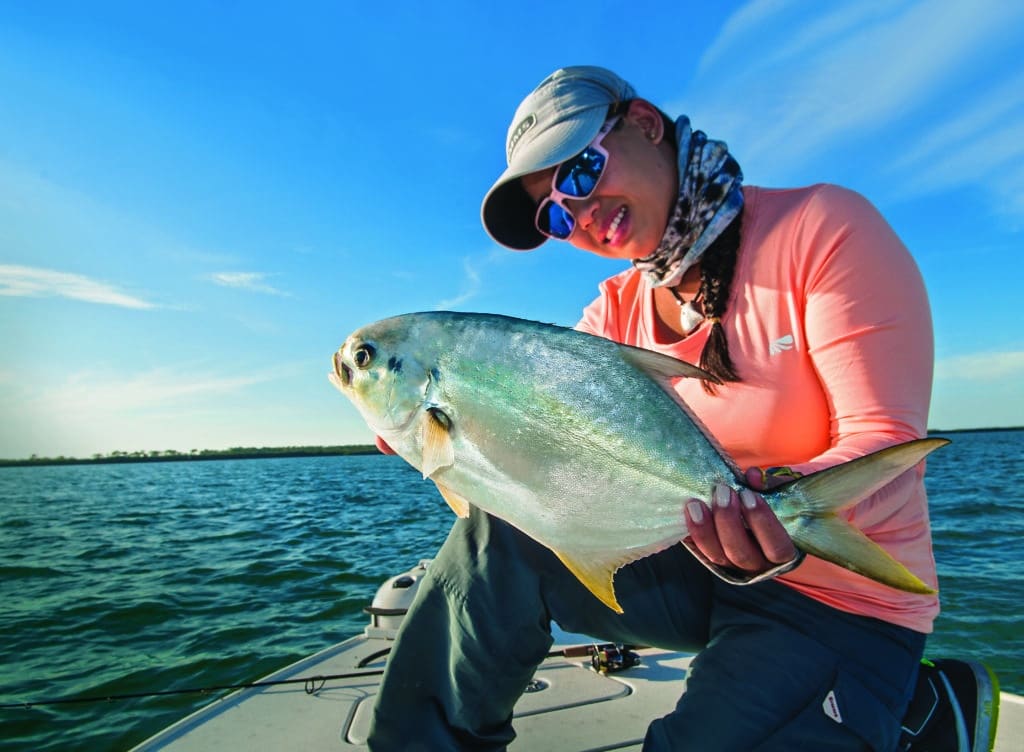The Debate Of Permit vs Pompano Has Many Anglers Thinking They Caught The Worlds Biggest Pompano, Or Wait, Is It A Permit?
Many anglers need clarification on the differences in permit fish vs pompano. Honestly, can you tell the difference? We will settle this debate once and for all and ease your mind so that you will know precisely what you are catching. The Florida pompano is one of the best-eating fish you can catch and are a coveted table fair. Catching these fish while surf fishing is always fun and a challenge. Its larger cousin, the permit, is a fast fish that cruises the flats in South Florida and the Florida Keys. Although these two have a few similar appearances, they usually vary in size. Because of this, a juvenile permit will often get mistaken for a large pompano. We want to prevent this from happening, so you are not filling a cooler full of permit fish. This type of situation could result in a hefty fine because, in the state of Florida, you are allowed to keep six Florida pompanos and only allowed to keep two permit fish.
Permit Vs Pompano: The differences
Both the pompano and permit belong to the jack family, Carangidae. This is what accounts for their slender silver bodies and deeply forked tails. One of the best ways to tell the difference between permit and pompano fish is based on size. Pompano remains a lot smaller than a permit. Pompano rarely grows more significant than seven pounds, while the permit is standard at 40 pounds or larger. There are a few anatomical differences as well. The fin on a juvenile permit is usually orange, while the pompano fin color is yellow. On the dorsal and anal fin, you can count the rays. Pompano generally has more in its fins than permits. As a juvenile permit grows, it will decrease in body depth the longer they get. They will also change fin colors from orange to more yellow. At this point, many anglers get confused between the two juvenile fish.
Florida Pompano: Pompano Fish | Florida Pompano
The elusive Florida Pompano
The Florida pompano (Trachinotus carolinus) has a deep, thin, silvery body with a greenish-gray back, which slopes gradually to a rounded head with a blunt snout and small mouth. The dorsal fin has 22 to 27 soft rays, and the anal fin has 20 to 23 rays. Pompanos are typically found in schools along sandy beaches, inlets, brackish bays, and estuaries, where they inhabit oyster bars and seagrass beds. They can tolerate a wide range of environmental variables- cold temperatures, low dissolved-oxygen levels, and low salinities—as long as the changes occur gradually. Pompano may reach 25 inches and 8 pounds. Pompano consists of a diet of sand fleas, shrimp, and small crabs. Many anglers enjoy catching them from the surf, and they make for one delicious dinner.
Permit Fish
Catching Permit In The Florida Keys
On the other hand, the body of the permit (Trachinotus falcatus) is silvery, with a dark or iridescent blue back. The dorsal fin has 17 to 21 rays, and the anal fin has 16 to 19 rays. Many adult permits have a large circular black splotch on their sides behind the base of the pectoral fin. Young permits have bright orange pelvic and anal fins and small teeth on the tongue. The Florida permit is the larger of the two species. It can grow to a whopping 79 pounds and 59 inches long, making it a trophy species that many saltwater anglers will target.
Permit fish vs pompano
Both pompano and permit have distinctive plates at the back of the mouth that help them crush the hard-shelled crustaceans and mollusks they eat. To catch these elusive fish, it’s important to use bait that mimics their natural prey, such as live sand fleas or shrimp. A light to medium spinning setup is recommended for pompano fishing, with a 7-8 foot rod and a reel with a high gear ratio and a smooth drag system. By understanding the behavior and habitat of these fish, using the right equipment and bait, and paying attention to the water conditions, anglers can increase their chances of catching a pompano or permit.

